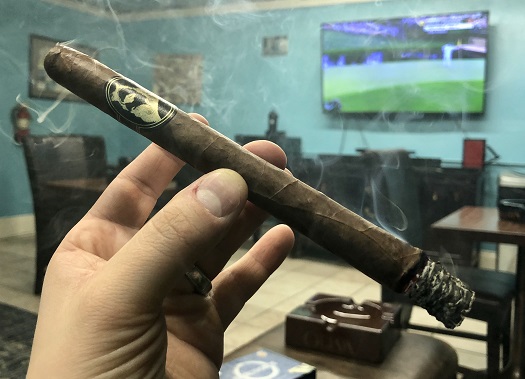
Caldwell Cigar Co. was launched in 2014 by Robert Caldwell with a lineup of Dominican blends. The company seemingly came out of nowhere; its cigars debuted only about eight months after Caldwell walked away from Wynwood Cigars, a co-venture with Christian Eiroa, formerly of Camacho. Most people will tell you eight months isn’t nearly enough time to create and execute a vision for a new brand, but Robert Caldwell isn’t most people.
 The following year, in 2015, in an effort to reach segments of the market that don’t typically seek Dominican smokes, Caldwell introduced Blind Man’s Bluff. The line is crafted at Agroindustrias Laepe S.A. in DanlÃ, Honduras—best known as the factory that produces Camacho—using a “their kitchen, our chef†approach. Caldwell says the intention was to make a “Caldwell-eqsue†cigar from tobaccos to which he didn’t previously have access.
The following year, in 2015, in an effort to reach segments of the market that don’t typically seek Dominican smokes, Caldwell introduced Blind Man’s Bluff. The line is crafted at Agroindustrias Laepe S.A. in DanlÃ, Honduras—best known as the factory that produces Camacho—using a “their kitchen, our chef†approach. Caldwell says the intention was to make a “Caldwell-eqsue†cigar from tobaccos to which he didn’t previously have access.
Then, in 2016, Caldwell introduced Eastern Standard Midnight Express. Unlike the Dominican Corojo-wrapped Eastern Standard line, which is billed as mild- to medium-bodied, Eastern Standard Midnight Express is marketed as medium- to full-bodied. Its recipe calls for a Connecticut Arapiraca Maduro wrapper, a Habana Dominicano binder, and filler tobaccos from Nicaragua (Habano) and the Dominican Republic (Criollo ’98 and Corojo).
The Caldwell website lists four Eastern Standard Midnight Express sizes—Corona, Robusto, Piramide, and Toro—but, at my local tobacconist, I found a Lancero (7.5 x 42), which cost me $11.85 (not including insane Chicago taxes).
The Lancero is a handsome, firm, moderately oily, Colorado Maduro-colored cigar with a dark band of black and gold and a ring at the foot that denotes “Midnight Express.†While a pigtail cap may have been the intention, the result (likely from packaging and shipping) is more of a twisted tail that’s flattened to the cap’s surface. The foot exhibits faint pre-light notes of honey and dry wood.
A single wooden match is all that’s need to establish an even light. On the palate, the Lancero is moist and woody with notes of oak, damp earth, leather, and some cayenne heat on the finish. There’s also a background sweetness that reminds me of cherry and dried fruit.
There are some changes to the flavor as the cigar progresses. For starters, the spice amps up a bit after an inch or so. Notably, this is a cinnamon spice, not black pepper. Here, I’d classify the body as solidly medium. Then, at the midway point, there’s a heavy dose of charred meat, salt, and black coffee. The meatiness—a taste of which I’m not particularly fond—tends to play a greater and greater role as the Lancero progresses.
Construction is good throughout. Expect a slow, straight burn, a moderate draw, solid smoke production, and a gray ash that holds pretty well off the foot.
For me, the Eastern Standard Midnight Express Lancero starts complex and promising, only to become overly meaty and salty in the second half. Smoking with a deliberately slowed pace doesn’t seem to noticeably offset this trend. That’s ultimately why I’m settling on a score of two and a half stogies out of five.

[To read more StogieGuys.com cigar reviews, please click here.]
–Patrick A
photo credit: Stogie Guys
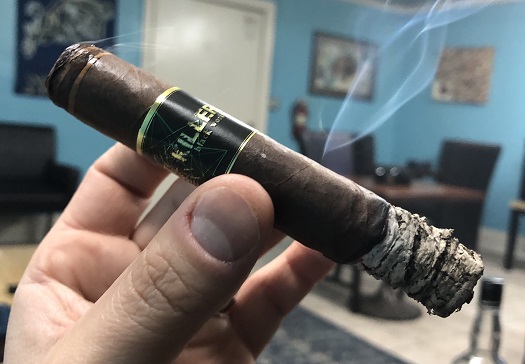


 The following year, in 2015, in an effort to reach segments of the market that don’t typically seek Dominican smokes, Caldwell introduced
The following year, in 2015, in an effort to reach segments of the market that don’t typically seek Dominican smokes, Caldwell introduced 
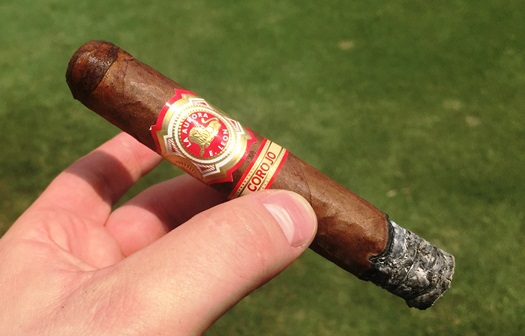
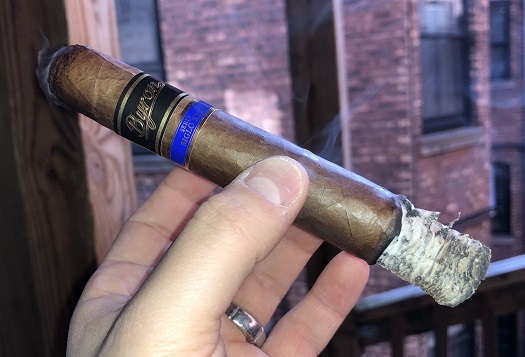
 The Byron line is named for Lord Byron, an English poet and a leader of the Romantic movement. It is the revival of an old Cuban brand from the mid-nineteenth century. “Many cigar factories produced numerous brands with Anglo-American names to attract U.K. and U.S. markets, which had tremendous demand for premium cigars at the time,†according to the
The Byron line is named for Lord Byron, an English poet and a leader of the Romantic movement. It is the revival of an old Cuban brand from the mid-nineteenth century. “Many cigar factories produced numerous brands with Anglo-American names to attract U.K. and U.S. markets, which had tremendous demand for premium cigars at the time,†according to the 
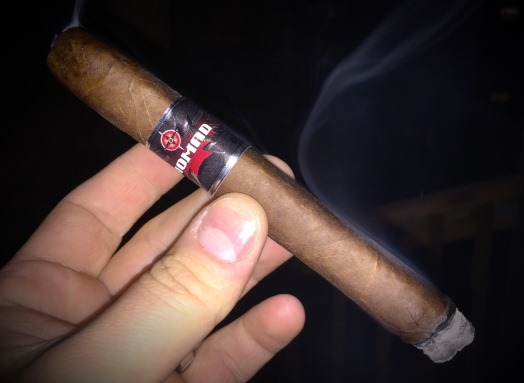
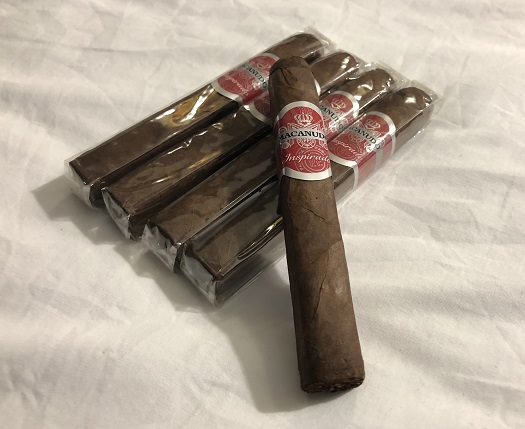
 Macanudo’s Inspirado line first debuted in 2004 for international markets; it wasn’t available in the U.S. until 2014. Keep in mind, unlike in the U.S.—where General Cigar/Scandinavian Tobacco Group (STG) also owns the rights to the Partagas, Punch, Hoyo de Monterrey, and other trademarks that originated in Cuba—the Cuban government still controls those marks overseas. That means Macanudo is far and away the best-known brand owned by STG outside the U.S. This may account for why Macanudo Inspirado was first marketed elsewhere.
Macanudo’s Inspirado line first debuted in 2004 for international markets; it wasn’t available in the U.S. until 2014. Keep in mind, unlike in the U.S.—where General Cigar/Scandinavian Tobacco Group (STG) also owns the rights to the Partagas, Punch, Hoyo de Monterrey, and other trademarks that originated in Cuba—the Cuban government still controls those marks overseas. That means Macanudo is far and away the best-known brand owned by STG outside the U.S. This may account for why Macanudo Inspirado was first marketed elsewhere.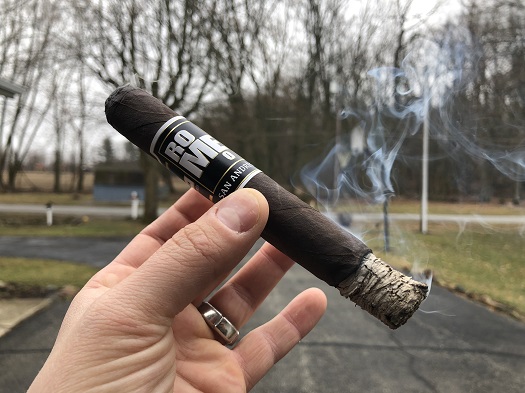
 “This elegant cigar, crafted in EstelÃ, Nicaragua, brings today’s connoisseurs a contemporary take on the rich and robust profiles of the Romeo y Julieta collection,†reads a press release. “This exceptional premium offering employs an aged San Andrés wrapper, considered one of the most flavorful leaves used in today’s premium cigar market.â€
“This elegant cigar, crafted in EstelÃ, Nicaragua, brings today’s connoisseurs a contemporary take on the rich and robust profiles of the Romeo y Julieta collection,†reads a press release. “This exceptional premium offering employs an aged San Andrés wrapper, considered one of the most flavorful leaves used in today’s premium cigar market.â€
 Patrick Ashby
Co-Founder & Editor in Chief
Patrick Ashby
Co-Founder & Editor in Chief Patrick Semmens
Co-Founder & Publisher
Patrick Semmens
Co-Founder & Publisher George Edmonson
Tampa Bureau Chief
George Edmonson
Tampa Bureau Chief